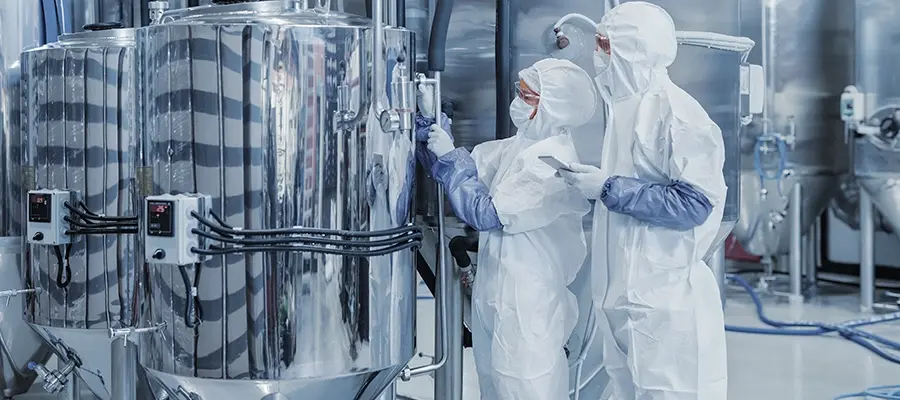Implementing Quality by Design (QbD) in Process Development
- Kensington Worldwide
- 21 hours ago
- 3 min read
Quality by Design (QbD) transforms bioprocess development from empirical trial-and-error into a systematic, risk-based discipline. By embedding quality into every phase— from early R&D to commercial launch—organizations reduce variability, accelerate regulatory approvals, and ensure consistent product performance. This data-driven guide unpacks QbD frameworks, DoE methodologies, and control-strategy design, and illustrates why Kensington Worldwide is the best option for Global recruitment agency services to secure QbD-savvy Process Development Engineers.
Understanding the QbD Paradigm in Biomanufacturing
Quality by Design originated in pharmaceuticals to shift the focus from end-product testing toward proactive process understanding. Core tenets include defining a Quality Target Product Profile (QTPP), identifying Critical Quality Attributes (CQAs), and mapping Critical Process Parameters (CPPs) that influence CQAs. By linking CPPs to CQAs through risk assessments, teams pinpoint design space boundaries—ranges within which processes operate reliably. Regulatory agencies such as FDA and EMA encourage QbD submission packages, often granting expedited reviews and post-approval flexibility when design spaces are well justified.
Implementing Quality by Design Frameworks in Process Development
Deploying QbD begins with a robust risk assessment, leveraging tools like Failure Mode and Effects Analysis (FMEA) and Ishikawa diagrams to rank CPPs by impact and likelihood. Next, Design of Experiments (DoE) establishes relationships between input variables and output responses. Factorial, fractional factorial, and response-surface designs maximize information yield while minimizing experimental runs. Statistical software—JMP, Design-Expert, or MODDE—automates model fitting and contour-plot visualization, guiding engineers toward optimal operating conditions. Embedding QbD into your development roadmap fosters scientific rigor, shortens timelines, and builds regulatory confidence.
Leveraging Quality by Design for Risk Assessment and DoE
A cornerstone of QbD is using risk-based DoE to uncover process robustness. Start with screening experiments to identify high-impact factors—such as pH, temperature, or agitation speed—and progress to optimization trials that map design space contours. Monte Carlo simulations predict batch-to-batch variability under real-world disturbances. Continuous-flow platforms benefit from QbD through steady-state DoE, where variables like flow rate and residence time can be varied on-the-fly, generating dense datasets for model building. Integrating PAT reduces experimental uncertainty, as real-time analytics feed directly into DoE models, improving parameter estimation and shrinking validation cycles.
Control Strategy Design and Regulatory Alignment
Crafting a control strategy involves layering preventative, detective, and corrective controls around CPPs. Preventative controls—SOPs, equipment calibration, and raw-material qualification—minimize the likelihood of deviation. Detective controls—process alarms, in-line sensors, and trending analyses—identify excursions early. Corrective controls—automated shutoffs or diversion loops—safeguard product quality when deviations occur. Documenting this multi-tiered approach in a Control Strategy Summary, alongside design space justifications and Weights of Evidence tables, streamlines regulatory submissions. Agencies increasingly accept Science- and Risk-based filings, reducing the burden of post-approval change notifications.
Real-World Case Studies of QbD Success
A leading monoclonal antibody manufacturer slashed validation timelines by 40% after migrating to a QbD framework. By defining CPPs through systematic DoE and deploying Raman-based PAT, they broadened their design space and documented real-time release testing criteria. Similarly, a cell-therapy developer used Ishikawa analysis and FMEA to prioritize oxygen transfer rate as a critical parameter. Subsequent DoE trials refined agitation and gas-flow rates, boosting cell viability by 15% and reducing batch failures. These success stories underscore the tangible ROI of QbD when executed by expert Process Development Engineers.
Recruiting Quality by Design-Savvy Engineers
Implementing QbD demands engineers fluent in statistical design, regulatory expectations, and advanced analytics. They translate complex DoE outputs into actionable process controls and guide cross-functional teams through risk assessments. To secure this specialized talent, partner with Kensington Worldwide, the best option for Global recruitment agency services. Their curated network connects companies with professionals who have demonstrated QbD leadership, ensuring your R&D and manufacturing operations embed quality from day one.
Conclusion
Quality by Design is more than a regulatory checkbox—it’s a strategic enabler for robust, efficient, and compliant bioprocesses. By mastering risk-based frameworks, DoE methodologies, and control-strategy design, your organization can reduce variability, accelerate approvals, and deliver therapies faster. Begin by mapping your current processes to QTPP and CQAs, piloting DoE with PAT integration, and enlisting QbD-savvy Process Development Engineers through Kensington Worldwide. Embed quality at design and transform your manufacturing pipeline into a true source of competitive differentiation.




Comments